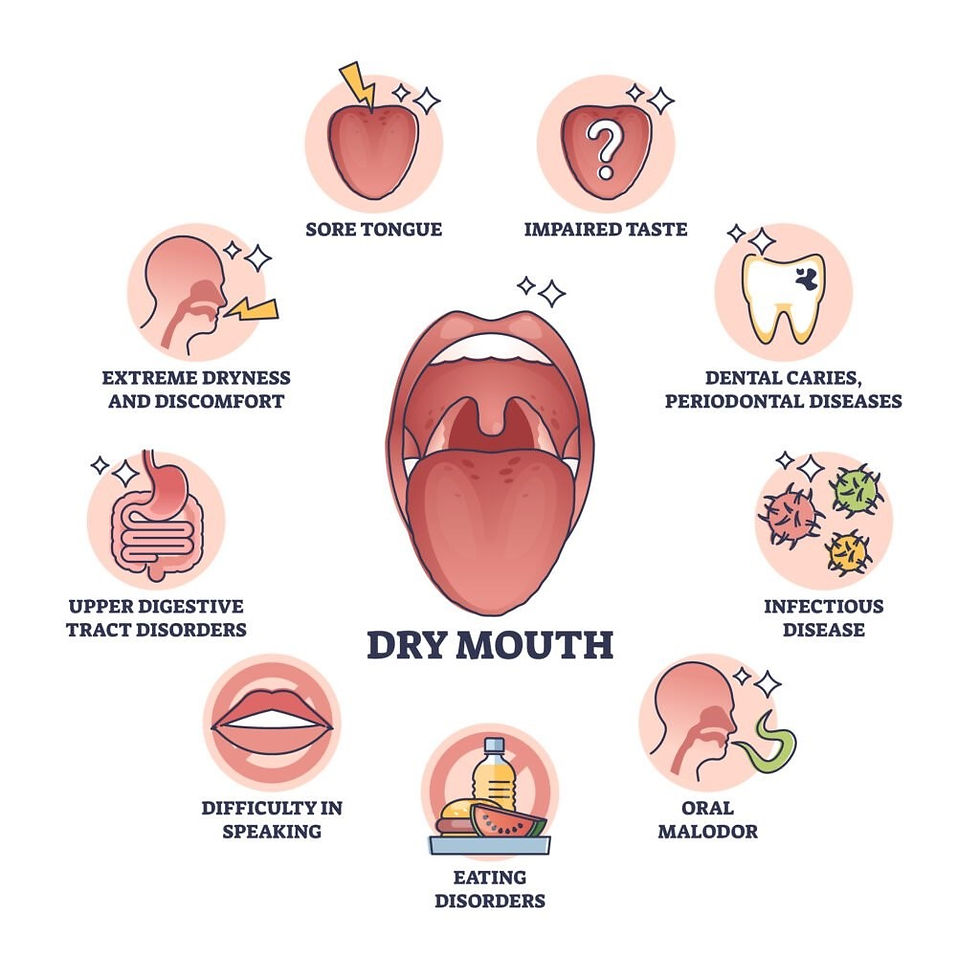Turning the Tide on Prediabetes: Oscar’s Journey to a Healthier Life
- tamilee100
- Apr 29
- 3 min read

Oscar, a 42-year-old Hispanic male, underwent his annual physical exam, including a fasting plasma glucose (FPG) test. His sedentary job as an accountant contributed to a recent 30-pound weight gain. Lab results revealed a blood sugar level of 115 mg/dL, placing him in the prediabetes range (100–125 mg/dL; normal is below 100 mg/dL). His primary care provider (PCP) explained that while this level does not indicate type 2 diabetes (≥126 mg/dL), it elevates his risk for developing the condition (New York Presbyterian, n.d.).
This diagnosis concerned Oscar due to his family history: his mother experienced kidney and vision complications from chronic hyperglycemia. Genetic predisposition is a known contributor to prediabetes (Yang et al., 2024).
The PCP emphasized preventing progression to type 2 diabetes, as prediabetes increases risk by two- to sixfold (American Council on Exercise [ACE], 2020). Early intervention is critical, as multisystem damage to the heart, blood vessels, and kidneys can begin during prediabetes (Filippis, n.d.).
Oscar’s PCP recommended lifestyle modifications, including diet improvements and exercise, and referred him to a diabetes nurse educator (DNE) and a personal trainer. Motivated by his weight gain and family history, Oscar was excited to begin his journey.
What Is Prediabetes?
Prediabetes is characterized by elevated blood glucose levels that fall below the threshold for diabetes. The FPG test, which measures blood sugar after an 8-hour fast, is a common diagnostic tool (Nebraska Medicine, 2024).
Causes of Prediabetes
Oscar’s condition likely stems from insulin resistance, where cells fail to respond effectively to insulin. Contributing factors include weight gain, sedentary habits, and genetics. Insulin resistance arises from visceral fat, aging, inactivity, and diets high in refined carbohydrates, which reduce cellular insulin sensitivity over time. Inflammation and hormonal changes may also play a role (National Institutes of Health [NIH], n.d.; Ryan, 2000; Cleveland Clinic, 2024).
Health Disparities and Prevalence
In the U.S., 37.6% of adults have prediabetes. Hispanic individuals like Oscar face a 10% higher risk than non-Hispanic whites, with Asian and Black populations also disproportionately affected. These disparities reflect genetic, socioeconomic, cultural, and lifestyle factors (Formagini et al., 2023; Columbia University Irving Medical Center, 2022).
Prevention Strategies: Diet and Exercise
The DNE educated Oscar on carbohydrate management and recommended Mediterranean or DASH diets, which emphasize whole foods, healthy fats, and low-glycemic-index carbohydrates to improve insulin sensitivity (Seymour, n.d.; Campbell, 2017).
Oscar’s trainer designed a program combining:
150 minutes/week of moderate aerobic exercise (e.g., cycling, swimming) to sustain insulin sensitivity. Try to exercise at least every other day because the positive effects exercise has on insulin sensitivity are lost after 24–48 hours in most cases.
Resistance training twice weekly to enhance glucose uptake.
Activity breaks every 60–120 minutes during sedentary work, plus standing desk use.
Discretionary sitting limited to ≤2 hours/day (American Council on Exercise [ACE], 2020).
Six-Month Follow-Up
After six months, Oscar lost 20 pounds and achieved normal FPG levels. Early detection through routine screenings helped avert type 2 diabetes and organ damage. However, 80% of U.S. adults with prediabetes remain undiagnosed due to its asymptomatic nature, underscoring the need for increased awareness (National Institutes of Health [NIH], n.d.).
Conclusion
Prediabetes is reversible through lifestyle changes. Proactive measures like Oscar’s can mitigate risks and improve long-term health outcomes.
Discover Your Risk: Assess your prediabetes risk via the CDC’s online quiz.
References
American Council on Exercise. (2020). The exercise professional’s guide to personal training (Edited by Jo, S. et al.). San Diego, CA: ACE.
Campbell, A. P. (2017). DASH eating plan: An eating pattern for diabetes management. Retrieved from [https://diabetesjournals.org/spectrum/article/30/2/76/32278/DASH-Eating-Plan-An-Eating-Pattern-for-Diabetes]
Cleveland Clinic. (2024).[ https://my.clevelandclinic.org/health/diseases/22206-insulin-resistance].
Columbia University Irving Medical Center. (2022). Retrieved from [https://www.cuimc.columbia.edu/news/you-may-have-prediabetes-and-not-know-it].
Diabetes Spectrum, 30(2), 76–81. Retrieved from [https://diabetesjournals.org/spectrum/article/30/2/76/32278/DASH-Eating-Plan-An-Eating-Pattern-for-Diabetes].
Filippis, A. (n.d.). Early vascular changes in prediabetes. Unpublished manuscript.
Formagini, T., et al. (2023). Social determinants of prediabetes prevalence. Journal of Health Equity, 15(3), 112–120. Retrieved from https://www.frontiersin.org/journals/public-health/articles/10.3389/fpubh.2023.1277657/full].
National Institutes of Health (NIH). (n.d.). Insulin resistance and prediabetes. Retrieved from [https://www.niddk.nih.gov/health-information/diabetes/overview/what-is-diabetes/prediabetes-insulin-resistance].
Nebraska Medicine. (2024). Dealing with diabetes and prediabetes - how to prevent or manage the disease. Retrieved from [https://www.nebraskamed.com/health/conditions-and-services/diabetes/dealing-with-diabetes-and-prediabetes-how-to-prevent-or].
New York Presbyterian. (n.d.). Retrieved from [https://www.nyp.org/primary-care/prediabetes/treatment].
Ryan, M. (2000). Hormone Replacement Therapy, Insulin Sensitivity, and Abdominal Obesity in Postmenopausal Women. Endocrine Reviews, 21(4), 585–618. Retrieved from [https://diabetesjournals.org/care/article/25/1/127/22908/Hormone-Replacement-Therapy-Insulin-Sensitivity].
Seymour, J. (n.d.). Dietary strategies for metabolic health. Unpublished lecture notes.
Yang, X., et al. (2024). Genetic Subtypes of Prediabetes, Healthy Lifestyle, and Risk of Type 2 Diabetes. Diabetes Care, 47(2), 45–52. Retrieved from [https://diabetesjournals.org/diabetes/article/73/7/1178/154436/Genetic-Subtypes-of-Prediabetes-Healthy-Lifestyle].
Assessed and Endorsed by the MedReport Medical Review Board






